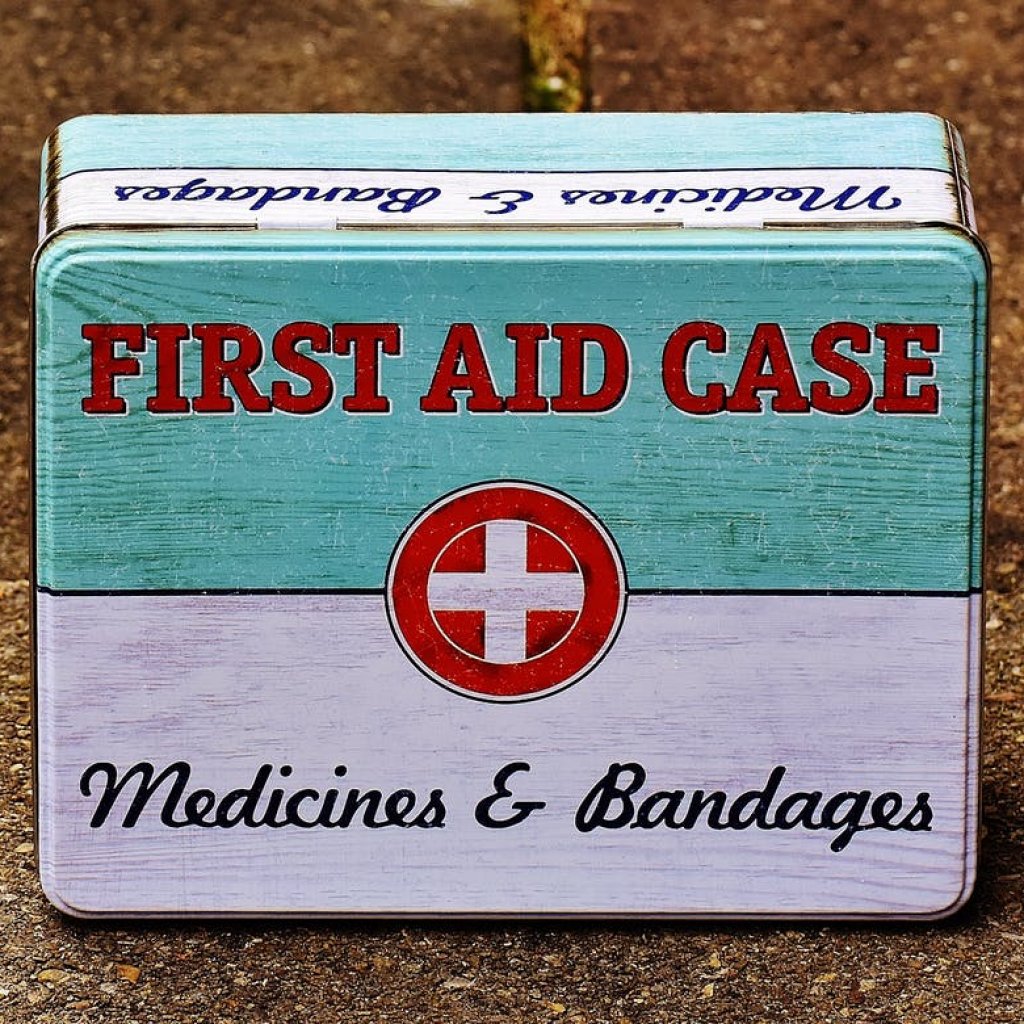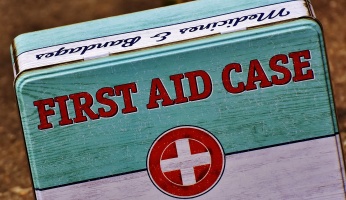3 Snake Bite Treatment Protocols to Try at Home
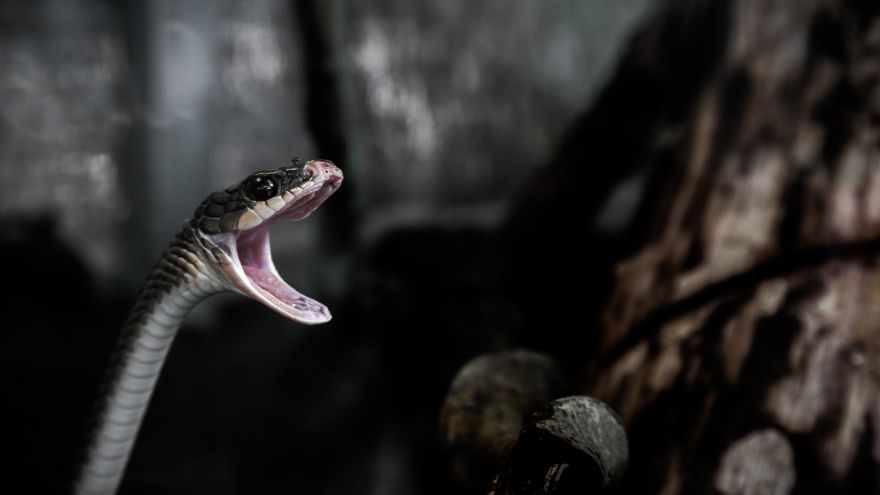 3 Snake Bite Treatment Protocols to Try at Home
thegearhunt.com
3 Snake Bite Treatment Protocols to Try at Home
thegearhunt.com
About 5.4 million people experience a snake bite globally within a year. Now, not all these are from poisonous snakes. But would you know what to do if you did experience a bite from a slithery critter? Haven’t you ever wondered what you could do if you or a family member accidentally come across this issue?
Many of us enjoy a weekend away exploring the wilderness, and we all try to prepare and bring everything we will need. But one situation we do not anticipate but can prepare for is an encounter with a snake. Below we will look at not only one snakebite treatment, but three different methods to treat a snake bite if one occurs on your next adventure.
Which Snakes Should I Watch Out For?
There are several species of snakes that live in different terrains across our globe. You should keep in mind that not all of these species are poisonous, but should be aware of the hazardous ones to watch out for. How to tell if a snake is poisonous is mainly by their colors but this is not always a for sure. Not surprisingly, most of the most poisonous snakes live in Australia, but some do live in North America.
The snakes that you are most likely to come across in North America are the following:
Black Diamond Rattlesnakes (Poisonous)
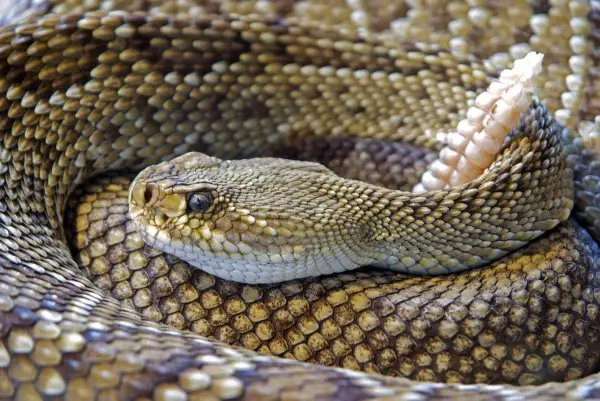
The Black Diamond Rattlesnake is one of the most common snakes that pack a vicious punch and can cause you harm. A rattlesnake bite can be one of the most painful you can receive from a snake. They live throughout Canada and The United States. They are very poisonous and have a venomous bite. If you see one of these snakes on your next adventure outdoors, be sure to try and stay clear.
Prairie Rattlesnake (Poisonous)
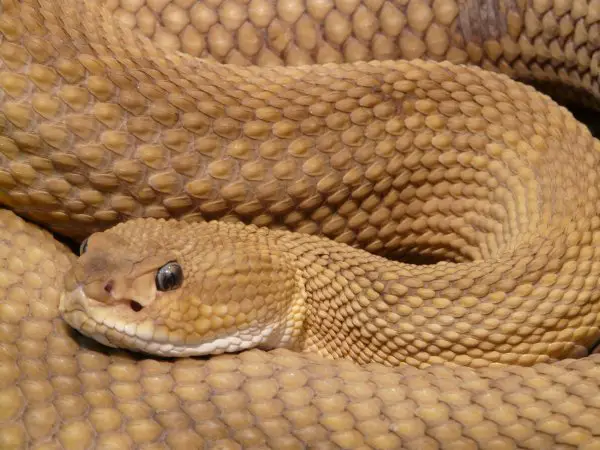 The Prarie Rattlesnake is another highly poisonous snake that calls Canada and the United States home. If you are an outdoor enthusiast, it is most likely you may come across one of these snakes in your life. Even though it is poisonous, it is not aggressive, so if you do come across one, do not panic.
The Prarie Rattlesnake is another highly poisonous snake that calls Canada and the United States home. If you are an outdoor enthusiast, it is most likely you may come across one of these snakes in your life. Even though it is poisonous, it is not aggressive, so if you do come across one, do not panic.
Cottonmouth (Poisonous)
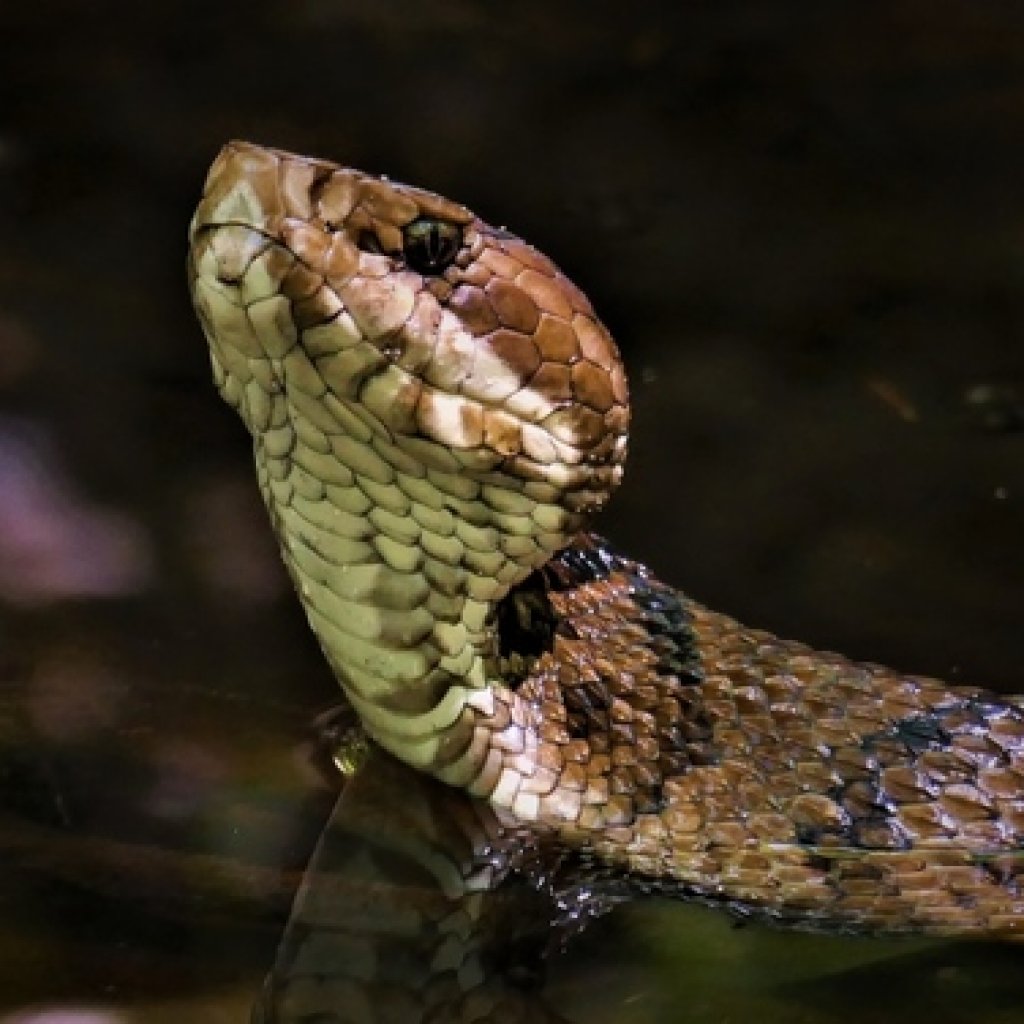
What makes the Cottonmouth so dangerous is that you will not only find this snake on land but also in water as well. You will not find this one up in the northern parts of North America, but is a common snake in the southern states.
The Cottonmouth is one of the most poisonous, and it is recommended to stay clear of it if you come across its path. Its poison is so potent, that it is unlikely you can reach treatment before the symptoms start to kick in. So research the area you are looking to explore to see if you have to be extra cautious of these snakes.
Black Rat Snake (Non-Poisonous)
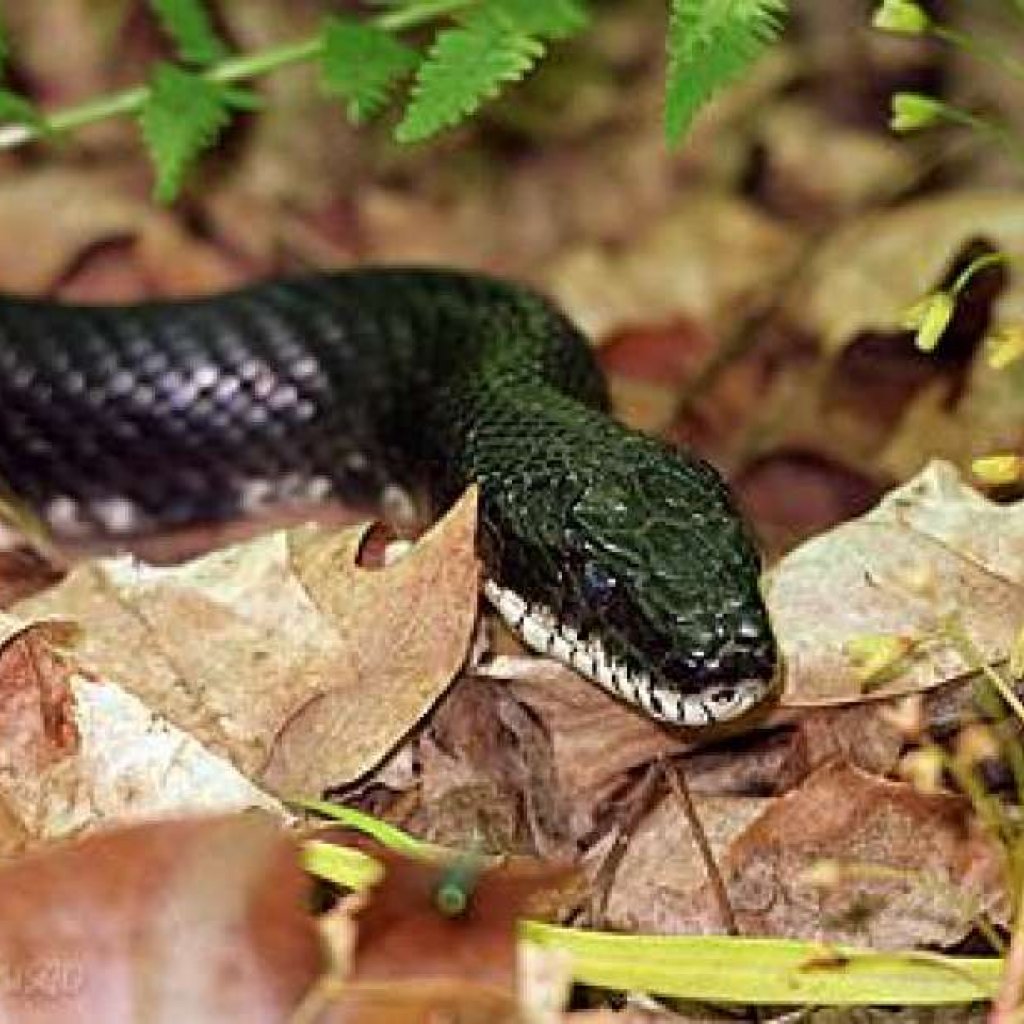
The Black Rat can be mistaken for a poisonous snake, but it is, in fact, not. They are found throughout North America, and even though they are not poisonous, if approached or if they feel attacked, they will bite. So, if you do come across the Black Rate snake on your next outdoor adventure, do not panic and do not approach if not needed. They are distinctively recognized y their black color and white underjaw.
Bull Snake (Non-Poisonous)
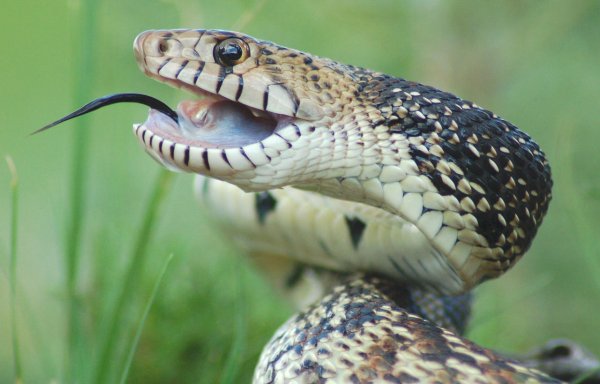
The Bullsnake is another non-venomous snake that is found throughout North America. Similar to the Black Rat Snake, they will only attack if agitated. If you are having an unlucky day and do happen to get bitten by one of these snakes, they have no venom, so there is nothing to worry about. It would be hard to get bitten by one of these snakes without knowing one is around as they usually make loud hissing before they strike.
Oh No, You’ve Been Bitten!
If you’re exploring the outdoors and suddenly you are bitten by a snake, your mind will be in panic, but there are some things you want to keep in mind.
The first thing you want to try and do is to get far away from it to ensure it doesn’t bite you again. The more times you are bitten, the more likely poison is to be transferred into your system. You also want to keep in mind if you do happen to get bit, is to try and get a clear image in your head of what the snake looked like. The reason you want to do this first is to figure out if it was poisonous and also to let the first responders know so that they can treat it appropriately.
Now that you have a clear image of what the snake looked like, try and cover and protect the wound. Do not let any bacteria get into the wound and try and seek medical attention as soon as possible. If you are aware of the snakes in the area and know that the snake that bit you was not poisonous, then you do not have to reach medical attention as soon. But try and see a doctor anyway, to be sure.
Three Home Remedies for a Snake Bite
Like any bite or sting, it is a good idea to know what to do if you do happen to find yourself getting nipped by a little critter. Many people will tell you different remedies to soothe a bite or sting, but the three most popular are below. These are specific to ease pain and assist in treating a snake bite.
Wash & Wrap
If you have been bitten by a snake and have determined that it is not venomous, you will want to treat it as you would any other bite or sting. The best treatment is to wash the bitten area with water and soap to make sure it is disinfected. Then you will want to wrap the bite with bandage wrap until it starts to heal and can not get infected.
If a non-venomous snake bites you this is your most straightforward treatment that you can perform yourself at your home. The bite itself will be painful, but you will be able to treat it yourself without having to see a doctor. If the pain is intense, try taking a pain reliever such as Advil or Tylenol to help with the pain.
Self Medicate
If you are bitten by one of the venomous snakes that habitat North America, you can try to self medicate before going to the doctor. Once you are bitten and you do not feel immediate symptoms, you will want to take ibuprofen to help counter the swelling. Keep an eye on the bite to ensure that it does not look infected, or the area begins to feel numb. If it does not, the pain should go down in a couple of days, and you will be fine.
If you do take ibuprofen and you feel the area starts to get numb, or you feel any numbness throughout your body, immediately go to emergency.
Go to Hospital
If the other two methods of home treatment do not work and you are feeling odd, go immediately to the hospital as you may need an anti-venom. If you are bitten by a snake and are not sure if it was poisonous or not, go immediately to the hospital to be safe. There are always home remedies that are available for bites or stings. If you want to be safe, consult your doctor. They will know what the best way to treat the bite is without you causing further injury to yourself.
Another thing to keep in mind if you are bitten by one of the poisonous snakes in North America is not to try and do something you saw on TV. We have all seen on TV, where an individual gets bitten by a snake, and they try and cut the wound to drain the poison or suck the venom out. These methods do not work and will cause you more injury, rather than help.
Be Safe and Stay Prepared on your Next Adventure
Any time you are going camping or traveling in the wilderness you want to make sure you know the terrain and pack accordingly. You never know what you will come across, and the deeper in the woods you are traveling, the more you want to be prepared. When it comes to preparedness, the animals that roam the area where you are headed is something you want to research.
If you are aware of the snakes that roam in the area, then you will know if you are bitten if they are poisonous or not. If they are poisonous and you are injected with snake venom, you will want to go immediately to the hospital for proper treatment. If you are bitten, your first reaction will be to panic, but try and look to see what the snake looks like so you can identify it. If you are bitten by a snake that you can identify that is non-venomous, try one of the home remedies listed above.
Happy exploring and always be prepared!





